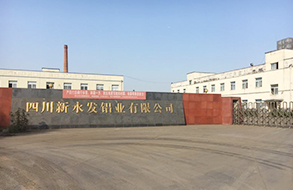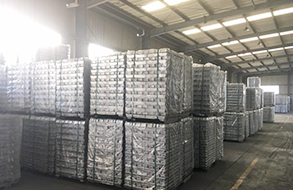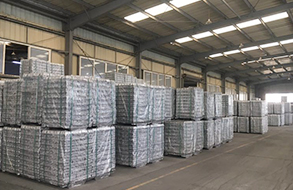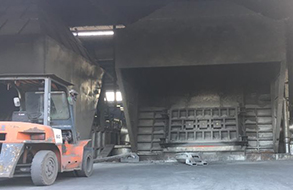Oversupply and trade friction hit secondary aluminum alloy market
----Interview with Kong Zhongjing
General Manager
Sichuan Xinyongfa Aluminum Industry Co., Ltd.
- Located in the industrial park in Guanyin town, Pengshan county of Meishan, Sichuan Xinyongfa Aluminum Industry Co., Ltd. covers an area of more than 36,000m2 and has a designed capacity of 120,000tpy. We have two sets of smelting furnaces for phase I project; one set includes a 45t and a 35t furnace; the other includes one 35t and one 25t furnace. Our company went into operation in October 2011 with annual production of 60,000t, having a production factory which accommodates four sets of smelting furnaces, a material selection factory, a die-casting factory for auto and motorcycle parts. Our annual value reaches RMB1 billion (USD 144.85 million).
- Asian Metal: In H1 this year, the demand for secondary aluminum alloy decreased a lot compared with that in the same period last year, so how do you think about the demand in Q3 this year?
- Mr. Kong: Typically, Q3 is the slack season for the secondary aluminum alloy industry as most plants in South China take vocation for hot weather. This year, auto sales go on decreasing, so the demand in Q3 would be worse than previous years, but that may recover to some extent in September, even though the busy season was not noticeable in September and October recently.
- Asian Metal: Does the Chinese secondary aluminum alloy market see overcapacity? If so, how to solve the problem?
- Mr. Kong: Currently, the secondary aluminum alloy market, especially the foundry aluminum alloy market, sees huge overcapacity. The average operating rate in China is about 40-45%. In my opinion, the overcapacity is caused by the disordered competition. Therefore, our country should provide a fair competition platform for the industry by improving relevant regulations and cracking down on illegal companies while the association should play the guiding role.
- Asian Metal: The environmental protection has been strict since last year and China would implement the policy for long. Did the policy affect your company?
- Mr. Kong: The environmental protection policy is good for the sustainable development and we do support it. Our environmental protection procedures are complete and the facilities meet national standards, so the inspections didn't affect our normal production. However, the unfair tax policy in the secondary aluminum alloy market impacted some outstanding enterprises, as producers in regions with lower tax could offer lower prices. The problem should be resolved by relevant department.
- Asian Metal: Auto consumption dropped sharply in H1 this year. What's your opinion on auto consumption in H2?
- Mr. Kong: Personally, I expect the auto consumption to improve in H2 this year. According to market conditions of previous years, the auto consumption was better in H2 than in H1 and the discount was usually bigger. However, as the boom in auto market fades away, the consumption in H2 would not rise a lot compared with last year.
- Asian Metal: What are the advantages in producing secondary aluminum alloy in Southwest China?
- Mr. Kong: Firstly, the Southwest area is close to the consumption market. Secondly, the natural gas price in Southwest China is 30-40% lower than that in Eastern coastal area, so the price for raw material aluminum scrap is lower.
- Asian Metal: Did the China-US trade war impact the secondary aluminum alloy market greatly? How will you cope with the situation?
- Mr. Kong: The trade war directly impacted the secondary aluminum alloy industry. Our downstream consumers typically exported auto, motorbike, appliance and tool parts directly to the US, but the higher tariff resulted in a decrease in orders and their demand for secondary aluminum alloy shrank accordingly. We should develop more customers in different areas by exploring domestic market.
- Asian Metal: What's your development plan under such fierce competition?
- Mr. Kong: Considering overcapacity and disordered competition in the secondary aluminum alloy industry, we have no plan to increase capacity at present but would optimize management mode for cost reduction, meanwhile complete raw material sourcing channels to enhance production quality and competitiveness.





